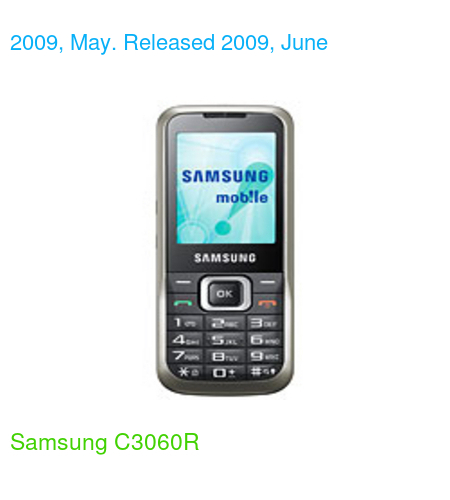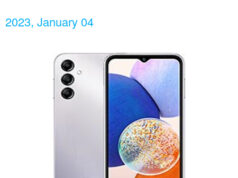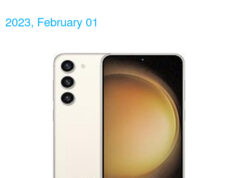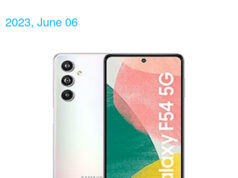| NETWORK | Technology GSM |
| Weight | 95 g (3.35 oz) |
| SIM | Mini-SIM |
| DISPLAY | Type TFT, 256K colors |
| Size | 2.2 inches, 15.2 cm2 (~27.6% screen-to-body ratio) |
| Resolution | 176 x 220 pixels (~128 ppi density) |
| MEMORY | Card slot No |
| Phonebook | 500 entries, Photocall |
| Call records | Yes |
| Internal | 15MB |
| MAIN CAMERA | Single 1.3 MP |
| Video | 176×144@15fps |
| SELFIE CAMERA | No |
| SOUND | Loudspeaker Yes 3.5mm jack No |
| COMMS | WLAN No Bluetooth Yes Positioning No Radio FM radio USB 2.0 |
| FEATURES | Sensors Messaging SMS, MMS Browser WAP 2.0/xHTML (NetFront ) Games Yes + downloadable Java Yes, MIDP 2.0 Mobile Tracker Organizer Voice memo Predictive text input |
| BATTERY | Type Removable Li-Ion 960 mAh battery |
| MISC | Colors Black |
Specifications data description of this 📱Samsung C3060R📱
Title: Unveiling the Specs of a Classic Device: A Comprehensive Review
Introduction
In this blog post, we will be taking a closer look at the specifications of a classic device that left a significant mark in the world of mobile technology. The device we’ll be discussing is not just any gadget; it’s a symbol of a bygone era when mobile phones were primarily used for calling and messaging. So, without further ado, let’s dive into the specifications of this classic device.
Lineup
Launched in an era where mobile phones were rapidly gaining popularity, this device was a game-changer. Its simple yet elegant design, coupled with its impressive features, made it a favorite among users. The device’s network technology was based on GSM, which was the standard at the time. The GSM LAUNCH📅 was a significant milestone in the world of mobile phones, as it brought affordable mobile communication to the masses.
Design
The device boasts a compact and sturdy design, perfect for users who prioritize functionality over flamboyance. With a weight of 95 g (3.35 oz)🏋️, it strikes a perfect balance between portability and durability. Its Mini-SIM card slot, reminiscent of the early days of mobile phones, adds to its classic appeal.
Specifications
🌐 NETWORK,LAUNCH📅
– Network: GSM
– LAUNCH:Year
BODY🏋️
– Weight: 95 g (3.35 oz)
– SIM: Mini-SIM
🌈 DISPLAY📏
– Type: TFT, 256K colors
– Size: 2.2 inches, 15.2 cm2 (~27.6% screen-to-body ratio)
– Resolution: 176 x 220 pixels (~128 ppi density)
🤖 OS 🛠️
– Not Applicable (Feature Phone)
🚀 Chipset 🔧
– Not Applicable (Feature Phone)
💪 CPU 🖥️
– Not Applicable (Feature Phone)
🎮 GPU 💻
– Not Applicable (Feature Phone)
🧠 MEMORY 🗂️
– Card slot: No
– Phonebook: 500 entries, Photocall
– Call records: Yes
– Internal: 15MB
📷 CAMERA 🎥
– Main Camera: Single 1.3 MP
– Video: 176×144@15fps
– Selfie Camera: No
🔈 SOUND 🎵
– Loudspeaker: Yes
– 3.5mm jack: No
📡 COMMS 📶
– WLAN: No
– Bluetooth: Yes
– Positioning: No
– Radio: FM radio
– USB: 2.0
💡 FEATURES 🎁
– Sensors: Messaging SMS, MMS
– Browser: WAP 2.0/xHTML (NetFront )
– Games: Yes + downloadable
– Java: Yes, MIDP 2.0
– Mobile Tracker
– Organizer
– Voice memo
– Predictive text input
🔋 BATTERY🔌
– Type: Removable Li-Ion 960 mAh battery
MISC
– Colors: Black
Conclusion
Revisiting the specifications of this classic device has been an exciting journey. Despite being a relic of the past, it still holds its own against modern devices in many aspects. From its robust build to its efficient use of resources, this device stands as a testament to the ingenuity of its creators. We hope this blog post has helped you appreciate the history of mobile phones and the milestones they have achieved through the years.
Feel free to leave a comment and share your thoughts or memories of this device or any other classic mobile phones you’ve used in the past. We’d love to hear from you!







